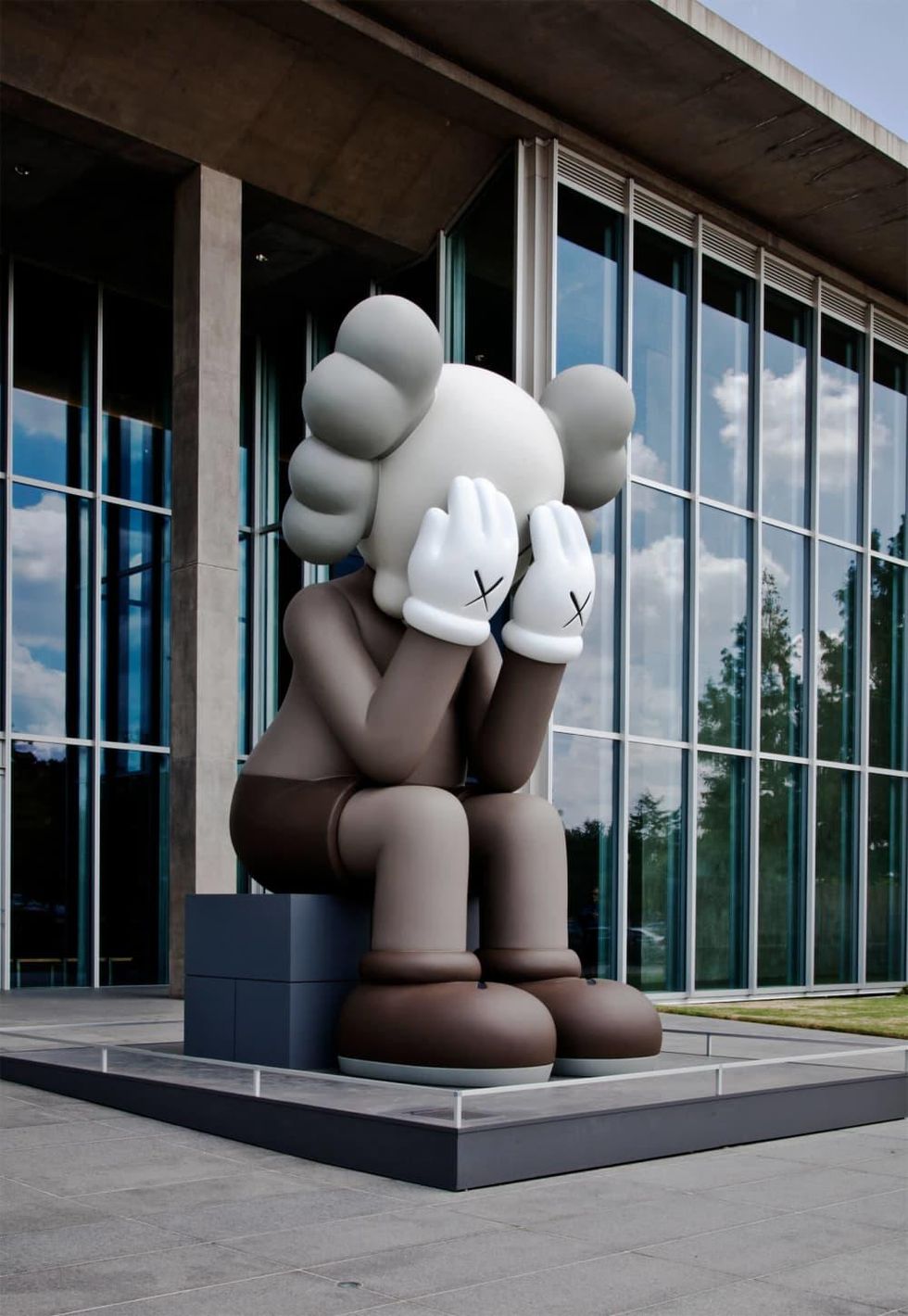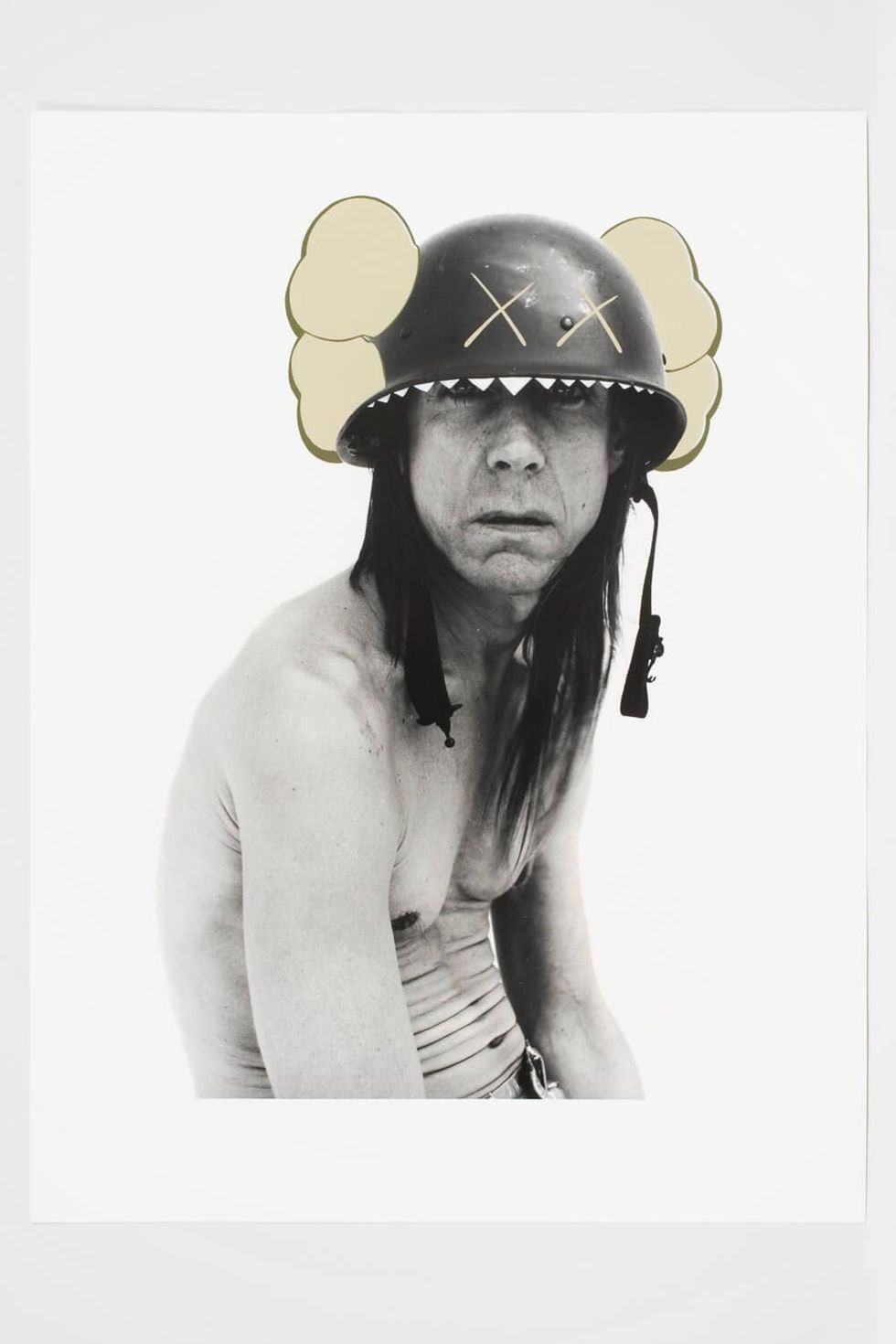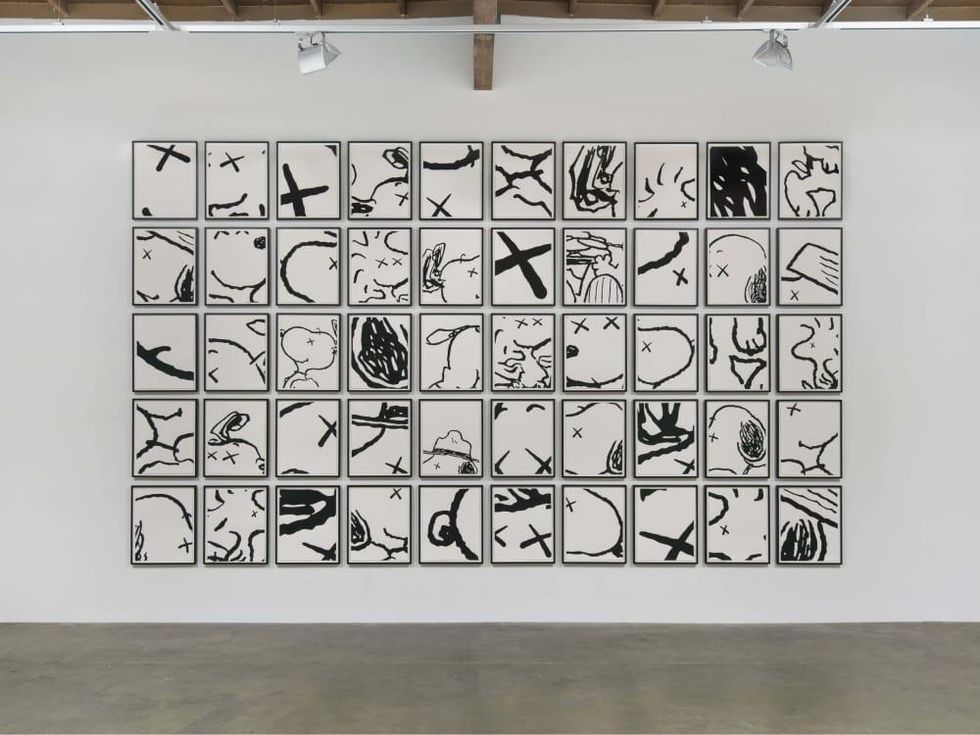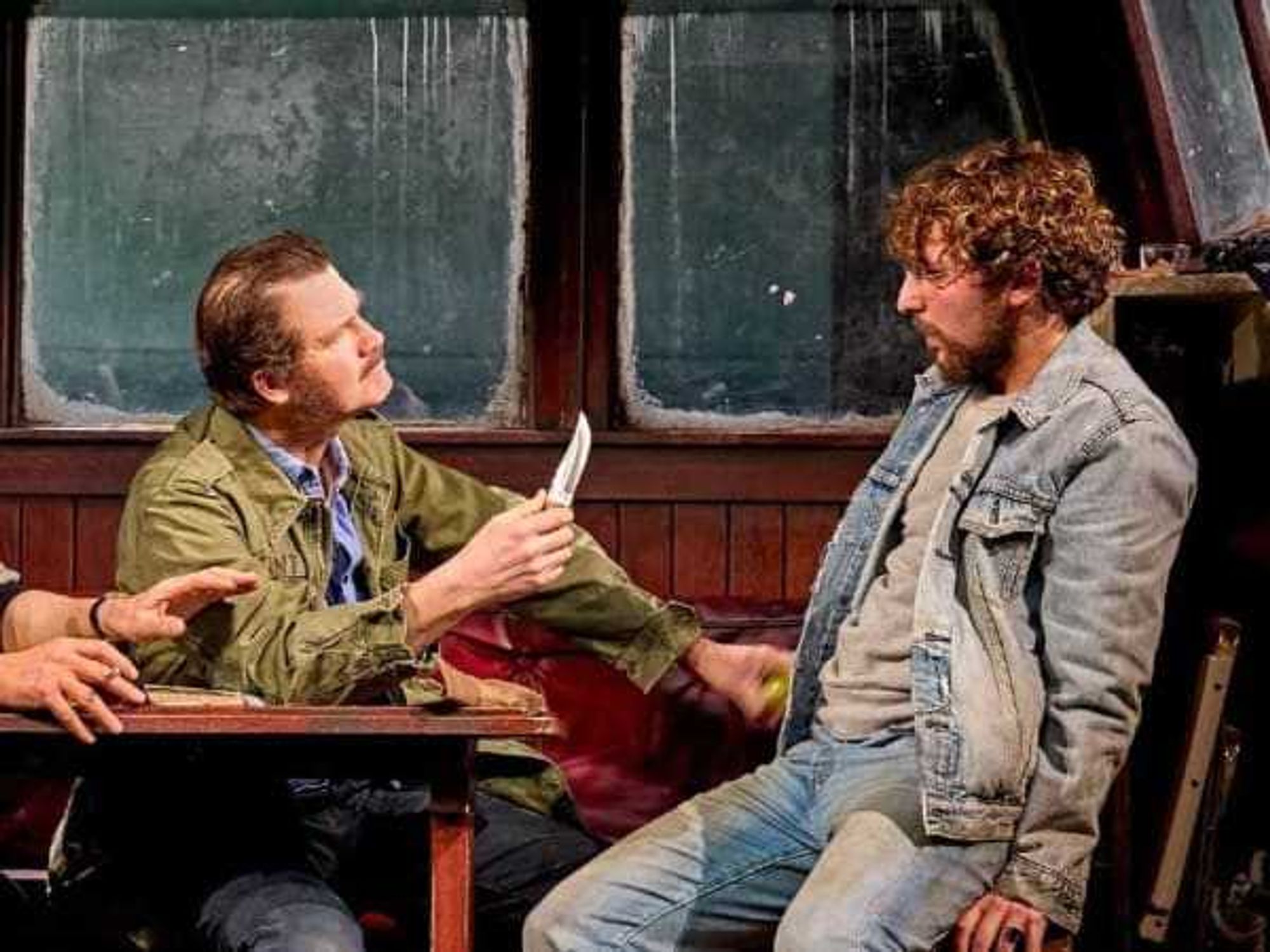King of Cartoons
Fort Worth Modern plays with animated art in major KAWS retrospective
Snoopy, the Simpsons, SpongeBob, Mickey Mouse — you’ve seen these characters countless times. But you’ve never seen them the way Brooklyn artist KAWS interprets them: mashed into sculptures, paintings, and collectible figurines.
With the October 20 opening of “KAWS: Where the End Starts” at the Modern Art Museum of Fort Worth, now you have the chance.
Merging fine art and merchandising as adeptly as it subverts our Saturday morning heroes, the exhibit includes more than 100 works in all. KAWS developed a relationship with the museum and curator Andrea Karnes after participating in 2011’s “Focus” exhibition, making the Modern an ideal location to survey 20 years of pop-off-the-canvas paintings, larger-than-life sculptures, and collectible figurines.
“We knew we wanted to bring him back for a bigger project,” Karnes says. “When I realized he had been working for 20 years, we thought it was a good time. Getting to know him and his work, and seeing how he works in his studio, helped me understand he’s really an important voice among contemporary art, and we felt we needed to give him a bigger platform.”
Growing up in Jersey City in the late ’80s and early ’90s, the artist formerly known as Brian Donnelly rode into Manhattan to skateboard and graffiti the subway trains with a moniker he has called “this weird fake identity.”
Trading work with other graffiti artists around the globe opened his eyes to the possibilities of his chosen form of art, and it wasn’t long before he was stealing fashion ads out of bus stops and phone booths, painting in his own graphics before sneakily slipping them back inside.
Photographers responded to his style and began seeking him out for collaborations in the pages of glossy titles. By 1999, a Japanese toy company called Bounty Hunter produced KAWS’ first collectible figurine of his character Companion, allowing the artist to begin thinking in three dimensions.
He eventually opened his (now defunct) menswear and toy store in Tokyo called OriginalFake in the mid-2000s, but it took the rarified art world another couple of years to catch up to the phenomenon known as KAWS.
As the artist has said, “When I did OriginalFake, I was so frustrated with people positing this idea of being a commercial artist or a fine artist. I wanted to be honest with the stuff I wanted to make. I stopped keeping track of what the possibilities are and just focused on what I was doing.
“Slowly, in a roundabout way, it came to working with galleries and now museums.”
Karnes, who has included a large selection of the figurines in the survey, feels the work is equally important in paint, wood, bronze, or vinyl. “He wanted to make sculpture, but couldn’t afford to, so he made toys first — and his sculpture looks just like the toys,” she says. “He’s used the same kind of recurring motifs. It’s the collapsing of things for him. He doesn’t have a problem entering the institution. He wanted to get there.”
And no casual viewer should make the mistake of calling KAWS a “street artist” in 2016. Instead, both KAWS and Karnes cite Claes Oldenburg, who paired cheap merchandise with serious works in his The Store project, as the artist’s spiritual ancestor.
“Oldenburg had his store in 1961, and in the 1980s Keith Haring had his Pop Shop in New York that sold his paintings in T-shirt and button form, so people could afford it,” Karnes says. “There’s a strong historical precedent that started with pop art, and that’s the tradition I see KAWS coming out of.”
His instantly recognizable characters have certainly earned their spot in the annals of pop. KAWS creatures like Chum, Companion, and Accomplice may have evolved from the world of animation, but the emotions they represent — and inspire — have a resonance all their own.
“To me, we respond to them both because they’re adorable and because they’re conveying something that’s so human,” says Karnes, who is reluctant to pick as favorite as it would be “like picking a favorite child.”
“They’re cartoonish and fun, but then there’s this serious side. They’re trying to make their way through the world like all of us. It’s relatable.”
---
“KAWS: Where the End Starts” runs through January 22, 2017.




